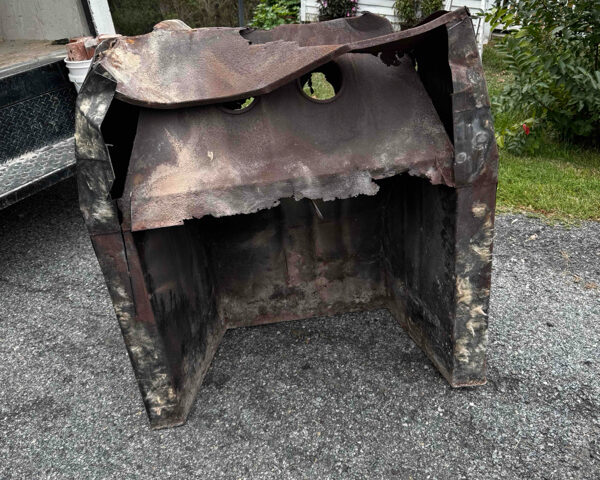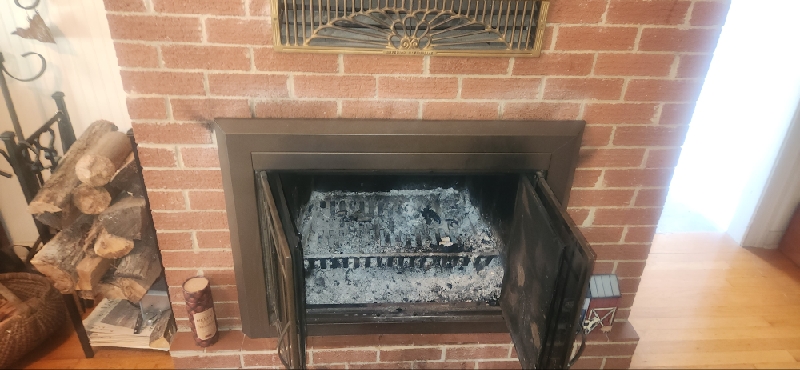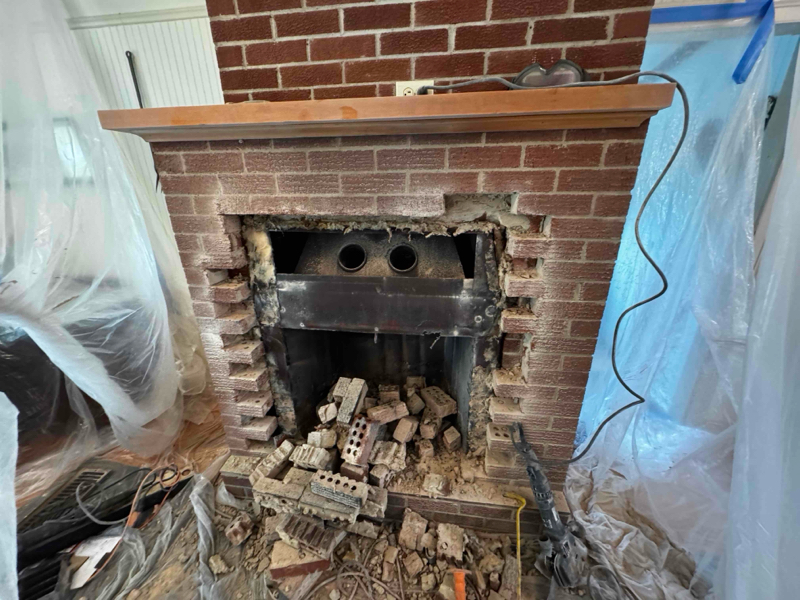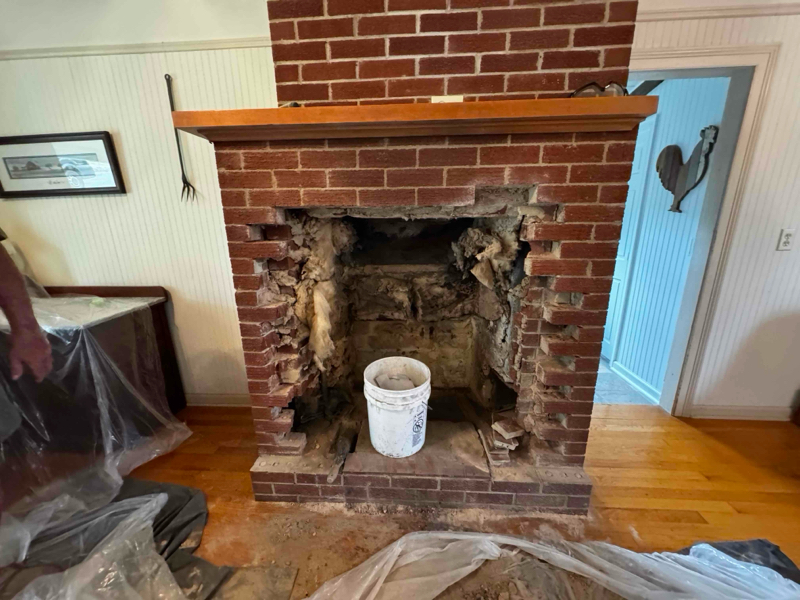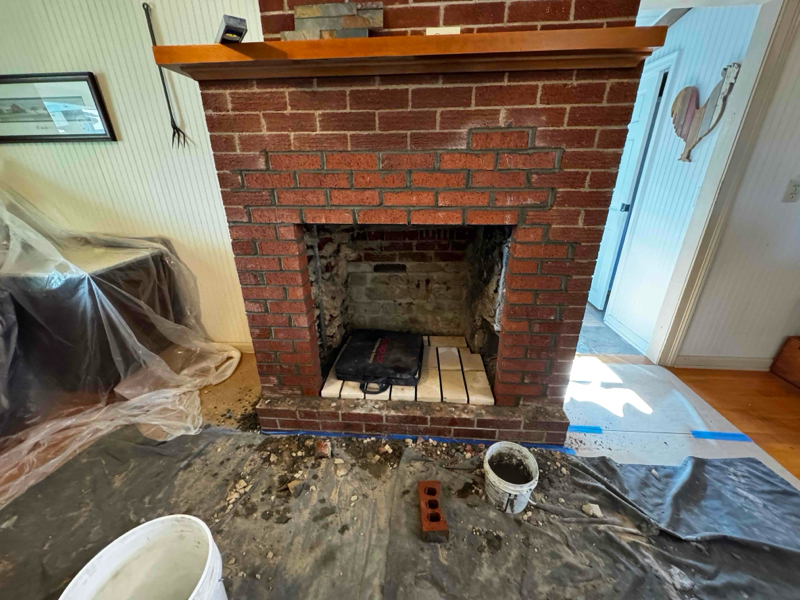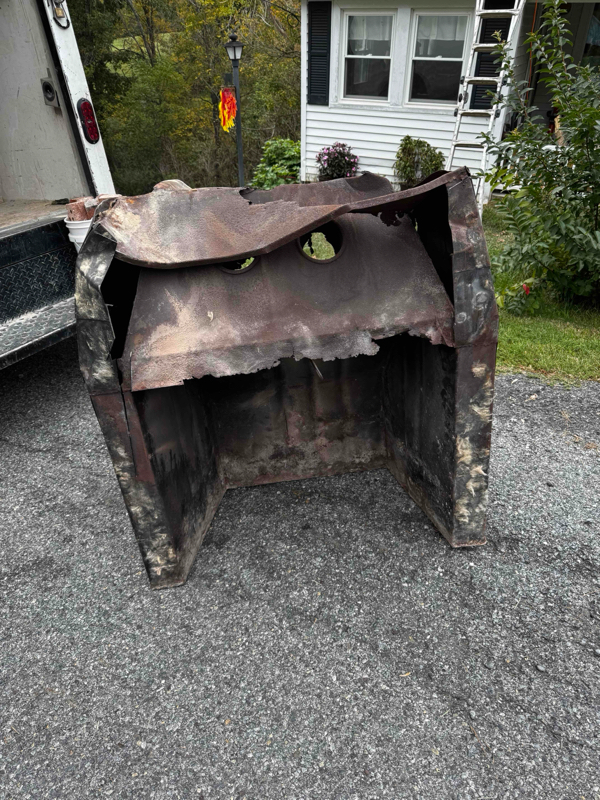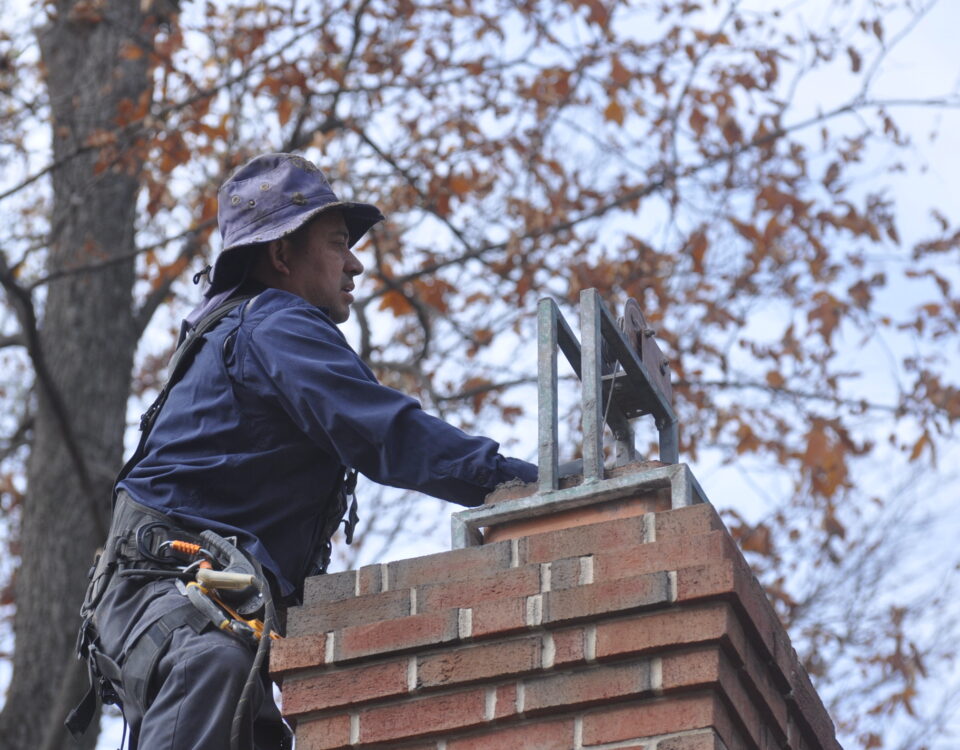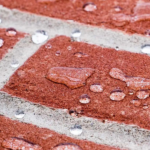
When Rain Gets Into Your Chimney: What’s Normal and What’s Not
October 1, 2025From time to time, we meet homeowners who have a Heatilator fireplace in their home. Many people enjoy them and appreciate the warmth they provide. Others move into a house that already has one and aren’t quite sure how it works, how to care for it, or what to do when problems arise.
While these fireplaces can be efficient and functional, they do require proper care and maintenance. In some cases, repairs or replacements can become a larger investment of time and cost than homeowners expect. Our goal with this post isn’t to advocate for or against this type of fireplace — but simply to help you better understand what you have and how to maintain it safely.
🔥 What Is a Heatilator Fireplace?
A Heatilator is a factory-built, prefabricated wood-burning fireplace made of metal rather than brick and mortar. It’s designed with air channels that circulate warm air back into the room, providing more heat than a traditional open masonry fireplace.
Because they’re prefabricated, these systems come as complete units with specific components — including a firebox, chimney pipe, and sometimes a blower. They’re built to precise clearances, which means parts must be properly maintained or replaced with matching components for safety.
⚠️ Common Problems with Heatilator Fireplaces
Over time, wear and tear can cause issues such as:
-
Cracked or damaged firebox panels (refractory panels)
-
Rust or corrosion from moisture entering the chimney system
-
Worn or warped metal parts from overheating or age
-
Deteriorated chimney pipe, cap, or chase cover allowing water damage
-
Loose or missing sealant around the facing or joints
Because prefab systems are designed as complete, tested units, repairs often must be done with manufacturer-approved parts — which can sometimes make repairs more complicated or expensive than expected.
🧰 Caring for Your Heatilator
The best way to extend the life of your Heatilator fireplace is regular professional maintenance. Here’s what we recommend:
-
Schedule an annual chimney inspection and cleaning.
-
Keep the chimney cap and chase cover in good condition to prevent leaks.
-
Replace cracked refractory panels promptly to maintain safety.
-
Burn only seasoned, dry hardwood to minimize soot and creosote buildup.
-
Keep air vents and louvers clean for proper air circulation.
Regular care can prevent minor issues from turning into major repairs and help your system last longer.
🏡 Repair or Replace?
If your Heatilator fireplace is more than 20–25 years old, you may start facing decisions about repair or replacement. Sometimes, fixing multiple components can approach the cost of installing a new unit. A professional inspection can help you weigh the options based on your specific situation, usage, and budget.
💬 Final Thoughts
At Potomac Chimney & Masonry Services, we don’t advocate for or against Heatilator fireplaces — we simply believe homeowners should understand what they have and how to care for it. Whether you’re maintaining, repairing, or considering replacement, our team can help you make an informed decision for your home and safety.
If you have a Heatilator fireplace and want to know more about its condition or options for repair, schedule a chimney inspection with our certified professionals today.
Below are before, during, and after pictures of a project to remove a rusted Heatilator. The customer is going to replace it with a wood stove.


